Species Guide
 ALDER
ALDER
ALNUS RUBRA
Where It GrowsPrincipally the Pacific Northwest, where it is the most abundant commercial hardwood. Average height is 90 feet and the tree matures in 25 to 40 years, but will begin to deteriorate by 60 to 80 years of age. Alder grows well on burned over lands and thrives in areas that have been ravaged by fire, earthquakes or logging. Main usesFurniture, kitchen cabinets, doors, shutters, moldings, panel stock, turnings, carvings and kitchen utensils. Relative Abundance2.9 percent of total U.S. hardwoods commercially available. Did You Know?Alder is used in the smoking of meats and fish. General DescriptionRed alder, a relative of birch, is almost white when freshly cut but quickly changes on exposure to air, becoming light brown with a yellow or reddish tinge. Heartwood is formed only in trees of advanced age and there is no visible boundary between sap and heartwood. The wood is fairly straight-grained with a uniform texture. Working PropertiesRed alder machines well and is excellent for turning. It nails, screws and glues well, and can be sanded, painted, or stained to a good finish. When stained, it blends with walnut, mahogany or cherry. It dries easily with little degrade and has good dimensional stability after drying. Physical PropertiesRed alder is a relatively soft hardwood of medium density that has low bending strength, shock resistance and stiffness. AvailabilityAvailable in dimension stock and lumber. 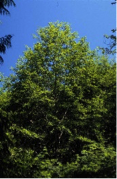 
|
||||||||||||||||||||||||||||||
Working PropertiesMachining     Nailing    Screwing    Gluing    Finishing    
|
||||||||||||||||||||||||||||||
Strength and Mechanical Properties (inch-pound)a
b) Specific gravity is based on weight when ovendry and volume when green or at 12% moisture content c) Modulus of elasticity measured from a simply supported, center-loaded beam, on a span depth ratio of 14/1. To correct for shear reflection, the modulus can be increased by 10%. |
||||||||||||||||||||||||||||||
 ASH
ASH
FRAXINUS SPP.
|
Norse mythology refers to ash as "the mighty tree that supports the heavens" and "below earth its roots went down to hell." Ash belongs to the olive family, although its only fruit is a dart-like winged seed. Ash is a popular species for food containers because the wood has no taste. Admiral Richard Byrd wore snowshoes made from ash during his polar expeditions and early windmills were made from this species. Where It GrowsThroughout the Eastern U.S. White ash trees range in height from 80 to 120 feet with diameter from 2 to 5 feet. Alder grows well on burned over lands and thrives in areas that have been ravaged by fire, earthquakes or logging. Main usesFurniture, flooring, doors, architectural millwork and moulding, kitchen cabinets, paneling, tool handles, baseball bats, hockey sticks, skis, oars and turnings. Relative Abundance4.6 percent of total U.S. hardwoods commercially available. Did You Know?Before man-made materials took over the market, ash was the preferred wood for making tennis racquets. General DescriptionThe sapwood is light-colored to nearly white and the heartwood varies from greyish or light brown, to pale yellow streaked with brown. The wood is generally straight-grained with a coarse uniform texture. The degree and availability of light-colored sapwood, and other properties, will vary according to the growing regions. Working PropertiesAsh machines well, is good in nailing, screwing and gluing, and can be stained to a very good finish. It dries fairly easily with minimal degrade, and there is little movement in performance. Physical PropertiesAsh has very good overall strength properties relative to its weight. It has excellent shock resistance and is good for steam bending. AvailabilityReadily available. 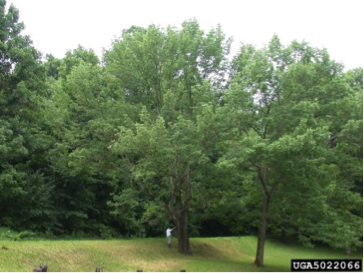 
|
||||||||||||||||||||||||||||||
Working PropertiesMachining    Nailing    Screwing    Gluing    Finishing    
|
||||||||||||||||||||||||||||||
Strength and Mechanical Properties (inch-pound)a
b) Specific gravity is based on weight when ovendry and volume when green or at 12% moisture content c) Modulus of elasticity measured from a simply supported, center-loaded beam, on a span depth ratio of 14/1. To correct for shear reflection, the modulus can be increased by 10%. |
||||||||||||||||||||||||||||||
 ASPEN (POPPLE)
ASPEN (POPPLE)
POPULUS TREMULOIDES
Where It GrowsCommercially in the Northeast. Average tree height is 40 to 60 feet. The aspen has a short life span: just before reaching full growth, it has a tendency to suffer from decay. Aspens are known for seeding and thriving in places where fires have been. Main usesFurniture parts (drawer sides), doors, mouldings, picture frames, millwork, toys, kitchen utensils, food containers, baskets and matchsticks. Important specialized uses include sauna laths because of its low conductivity of heat, and chopsticks. Relative AbundanceTogether, aspen, basswood, cottonwood, elm, gum, hackberry, sassafras, sycamore and willow represent 12.5 percent of commercially available U.S. hardwoods. Did You Know?Chopsticks and excelsior (the packing material) often are made of aspen. General DescriptionSapwood is white, blending into the light brown heartwood. The contrast between sap and heartwood is small. The wood has a fine uniform texture and is straight-grained. Working PropertiesAspen does not split when nailed, it machines easily with a slightly fuzzy surface, and turns, bores, and sands well. It takes paint and stain well to produce a good finish although care is required where the surface is fuzzy. It has low to moderate shrinkage and good dimensional stability. Aspen is a true poplar, and therefore has similar characteristics and properties to cottonwood. Physical PropertiesThe wood is light and soft, with low bending strength and stiffness, and medium shock resistance. It has a very low bending classification. AvailabilityLimited, and rarely available in thick stock.  
|
||||||||||||||||||||||||||||||
Working PropertiesMachining    Nailing     Screwing     Gluing    Finishing  
|
||||||||||||||||||||||||||||||
Strength and Mechanical Properties (inch-pound)a
b) Specific gravity is based on weight when ovendry and volume when green or at 12% moisture content c) Modulus of elasticity measured from a simply supported, center-loaded beam, on a span depth ratio of 14/1. To correct for shear reflection, the modulus can be increased by 10%. |
||||||||||||||||||||||||||||||
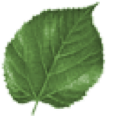 BASSWOOD (LINDEN)
BASSWOOD (LINDEN)
TILIA AMERICANA
|
The name comes from its inner bark, or bast, used by Native Americans to make rope. Where It GrowsPrincipally the Northern and Lake states. Average tree height is 65 feet. Main usesCarvings, turnings, furniture, pattern-making, moldings, millwork and musical instruments. An important specialized use is Venetian blinds and shutters. Relative AbundanceTogether, aspen, basswood, cottonwood, elm, gum, hackberry, sassafras, sycamore and willow represent 12.5 percent of commercially available U.S. hardwoods. Did You Know?Native Americans also used basswood’s inner bark fibers to make thread and fabric. General DescriptionThe sapwood of basswood is usually quite large and creamy white in color, merging into the heartwood which is pale to reddish brown, sometimes with darker streaks. The wood has a fine uniform texture and indistinct grain that is straight. Working PropertiesBasswood machines well and is easy to work with hand tools making it a premier carving wood. It nails, screws, and glues fairly well and can be sanded and stained to a good smooth finish. It dries fairly rapidly with little distortion or degrade. It has fairly high shrinkage but good dimensional stability when dry. Physical PropertiesThe wood is light and soft with generally low strength properties and a poor steam-bending classification. AvailabilityReasonable availability. 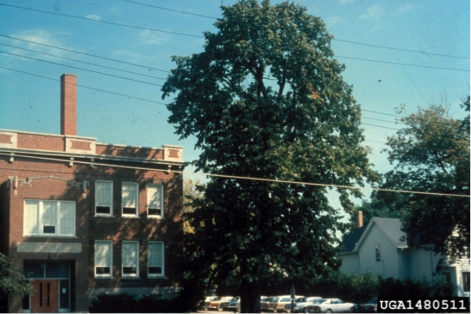 
|
||||||||||||||||||||||||||||||
Working PropertiesMachining     Nailing   Screwing    Gluing    Finishing    
|
||||||||||||||||||||||||||||||
Strength and Mechanical Properties (inch-pound)a
b) Specific gravity is based on weight when ovendry and volume when green or at 12% moisture content c) Modulus of elasticity measured from a simply supported, center-loaded beam, on a span depth ratio of 14/1. To correct for shear reflection, the modulus can be increased by 10%. |
||||||||||||||||||||||||||||||
 BEECH
BEECH
FAGIS GRANDIFOLIA
|
Known as "Mother of the Forest" for its nutrient-rich humus. Beech has a long, illustrious past. The Aryan Tribes of Asia, the earliest known people to use a written language, carved their messages into the soft, smooth pliable bark of the beech tree trunk. The writings, cut out of the bark and used intact, were called "boc," which eventually became "book." Where It GrowsThroughout the Eastern U.S., commercial concentration is in the Central and Middle Atlantic states. Average tree height is 120 feet. Main usesFurniture, doors, flooring, millwork, paneling, brush handles, woodenware, bending stock, toys and turnings. It is particularly suitable for food and liquid containers since there is no odor or taste. Relative Abundance0.4 percent of total U.S. hardwoods commercially available. Did You Know?Beech was used to make snuff boxes as well as mortars and pestles. General DescriptionThe sapwood is white with a red tinge, while the heartwood is light to dark reddish brown. The wood is generally straight-grained with a close uniform texture. Working PropertiesBeech works readily with most hand and machine tools. It has good nailing and gluing properties and can be stained to a good finish. The wood dries fairly rapidly but with a strong tendency to warp, split and surface check. It is subject to a high shrinkage and moderate movement in performance. Physical PropertiesBeech is classed as heavy, hard, strong, high in resistance to shock and highly suitable for steam bending. Good resistance to abrasive wear. AvailabilityLimited 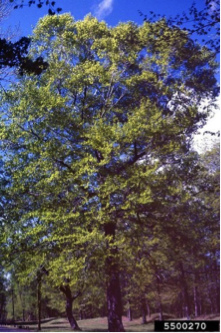 
|
||||||||||||||||||||||||||||||
Working PropertiesMachining     Nailing    Screwing    Gluing  Finishing    
|
||||||||||||||||||||||||||||||
Strength and Mechanical Properties (inch-pound)a
b) Specific gravity is based on weight when ovendry and volume when green or at 12% moisture content c) Modulus of elasticity measured from a simply supported, center-loaded beam, on a span depth ratio of 14/1. To correct for shear reflection, the modulus can be increased by 10%. |
||||||||||||||||||||||||||||||
 BLACK WALNUT
BLACK WALNUT
JUGLANS NIGRA
|
The roots of the walnut tree release a toxic material which may kill other plants growing above them. From the time of ancient Greeks until well into modern European history, walnuts symbolized fertility and were strewn at weddings. Just the opposite, in Romania, brides who wished to delay childbearing placed into the bodice of their wedding dresses one walnut for each year they hoped to wait. Where It GrowsThroughout Eastern U.S., but principal commercial region is the Central states. Average tree height of 100 to 150 feet. Main usesFurniture, cabinets, architectural millwork, doors, flooring, paneling, and gun stocks. A favored wood for using in contrast with lighter-colored species. Relative Abundance1.9 percent of total U.S. hardwoods commercially available. Did You Know?Walnut is one of the few American species planted as well as naturally regenerated. General DescriptionThe sapwood of walnut is creamy white, while the heartwood is light brown to dark chocolate brown, occasionally with a purplish cast and darker streaks. The wood develops a rich patina that grows more lustrous with age. Walnut is usually supplied steamed, to darken sapwood. The wood is generally straight-grained, but sometimes with wavy or curly grain that produces an attractive and decorative figure. This species produces a greater variety of figure types than any other. Working PropertiesWalnut works easily with hand and machine tools, and nails, screws and glues well. It holds paint and stain very well for an exceptional finish and is readily polished. It dries slowly, and care is needed to avoid kiln degrade. Walnut has good dimensional stability. Physical PropertiesWalnut is a tough hardwood of medium density, with moderate bending and crushing strengths and low stiffness. It has a good steam-bending classification. AvailabilityReasonable availability with regional limitations. 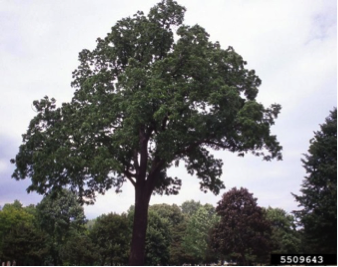 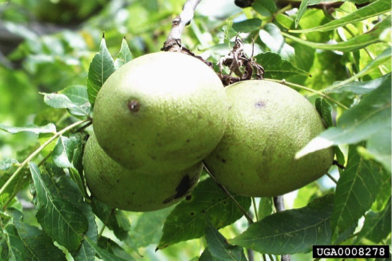
|
||||||||||||||||||||||||||||||
Working PropertiesMachining     Nailing    Screwing    Gluing    Finishing    
|
||||||||||||||||||||||||||||||
Strength and Mechanical Properties (inch-pound)a
b) Specific gravity is based on weight when ovendry and volume when green or at 12% moisture content c) Modulus of elasticity measured from a simply supported, center-loaded beam, on a span depth ratio of 14/1. To correct for shear reflection, the modulus can be increased by 10%. |
||||||||||||||||||||||||||||||
 CHERRY
CHERRY
PRUNUS SEROTINA
|
Like all fruit trees, cherry belongs to the rose family. American Colonists used the cherry tree for its fruit, medicinal properties and home furnishings. They mixed cherry juice with rum to create Cherry Bounce, a bitter but highly favored cordial. The bark was used in the production of drugs to treat bronchitis, and cherry stalks were used to make tonics. Where It GrowsEastern U.S., principally Northern and Lake states. The average tree is 60 to 70 feet in height. Main usesFine furniture and cabinet making, moldings and millwork, kitchen cabinets, paneling, flooring, doors, boat interiors, musical instruments, turnings and carvings. Relative Abundance3.9 percent of total U.S. hardwoods commercially available. Did You Know?Early printmakers used cherry for their engraving blocks. General DescriptionThe heartwood of cherry varies from rich red to reddish brown and will darken with age and on exposure to light. In contrast, the sapwood is creamy white. The wood has a fine uniform, straight grain, satiny, smooth texture, and may naturally contain brown pith flecks and small gum pockets. Working PropertiesCherry is easy to machine, nails and glues well and when sanded and stained, it produces an excellent smooth finish. It dries fairly quickly with moderately high shrinkage, but is dimensionally stable after kiln-drying. Physical PropertiesThe wood is of medium density with good bending properties, it has low stiffness and medium strength and shock resistance. AvailabilityReadily available. 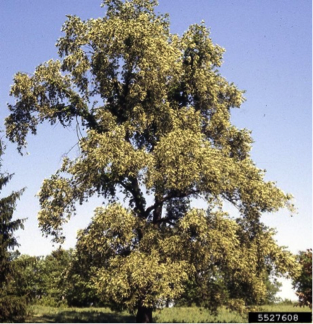 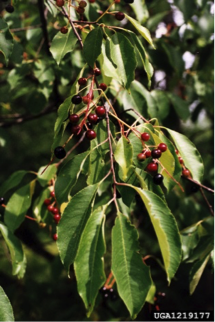
|
||||||||||||||||||||||||||||||
Working PropertiesMachining     Nailing    Screwing    Gluing    Finishing    
|
||||||||||||||||||||||||||||||
Strength and Mechanical Properties (inch-pound)a
b) Specific gravity is based on weight when ovendry and volume when green or at 12% moisture content c) Modulus of elasticity measured from a simply supported, center-loaded beam, on a span depth ratio of 14/1. To correct for shear reflection, the modulus can be increased by 10%. |
||||||||||||||||||||||||||||||
 COTTONWOOD
COTTONWOOD
POPULUS DELTOIDUS
|
Cottonwood is the state tree of Kansas, Nebraska and Wyoming. Where It GrowsEastern U.S., main commercial areas: Middle and Southern states. Average tree height is 80 to 100 feet. Cottonwoods have rapid growth throughout their first 40 years, then grow slowly for the many years after. Some have been known to reach 100 feet in height in fifteen years. Main usesFurniture, furniture parts, millwork and moldings, toys and kitchen utensils. Specialized uses are Venetian blinds, shutters, and caskets. Relative AbundanceTogether, aspen, basswood, cottonwood, elm, gum, hackberry, sassafras, sycamore and willow represent 12.5 percent of commercially available U.S. hardwoods. Did You Know?Cottonwoods were a welcome sight for pioneers moving westward. The cottonwoods marked the presence of streams in the otherwise treeless Great Plains. General DescriptionThe sapwood is white and may contain brown streaks while the heartwood may be pale to light brown. It is a diffuse porous wood with a coarse texture. The wood is generally straight-grained and contains relatively few defects. Cottonwood is a true poplar, and therefore has similar characteristics and properties to aspen. Working PropertiesGeneral machinability is fair, although tension wood is frequently present and can cause a fuzzy surface when cut, which in turn will require additional care when finishing. The wood glues well and has good resistance to splitting when nailing and screwing. It dries easily but may still have a tendency to warp, with slight movement in performance. Physical PropertiesCottonwood is relatively light in weight. The wood is soft, weak in bending and compression, and low in shock resistance. It has no odor or taste when dry. AvailabilityWidely available. 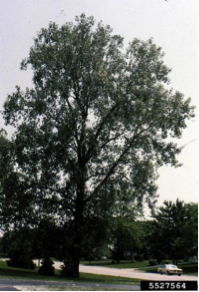 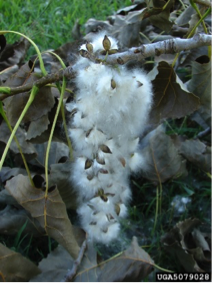
|
||||||||||||||||||||||||||||||
Working PropertiesMachining  Nailing     Screwing     Gluing   Finishing  
|
||||||||||||||||||||||||||||||
Strength and Mechanical Properties (inch-pound)a
b) Specific gravity is based on weight when ovendry and volume when green or at 12% moisture content c) Modulus of elasticity measured from a simply supported, center-loaded beam, on a span depth ratio of 14/1. To correct for shear reflection, the modulus can be increased by 10%. |
||||||||||||||||||||||||||||||
 CYPRESS (BALD CYPRESS, RED CYPRESS, YELLOW CYPRESS, SOUTHERN CYPRESS)
CYPRESS (BALD CYPRESS, RED CYPRESS, YELLOW CYPRESS, SOUTHERN CYPRESS)
TAXODIUM DISTICHUM
|
Cypress trees are conifers, but unlike most American softwoods, these are deciduous trees that shed foilage in the fall like hardwoods. Although cypress is a softwood, it grows alongside hardwoods and traditionally has been grouped and manufactured with hardwoods. The oils in cypress' heartwood make it one of the most durable woods when exposed to moisture conditions causing decay. Where It GrowsMost cypress trees are natives of the South. They are found primarily in wet, swampy areas along the Atlantic Coastal Plain from Delaware to Florida, and west along the Gulf of Mexico to the border of Texas and Mexico. Cypress also thrives along the Mississippi Valley from the Louisiana delta to southern Indiana. Cypress roots love water. Some trees growing on wet sites develop what are called cypress "knees" or pneumatophores. The knee-like upright growths come from the roots, helping to support the tree and also to aerate the waterlogged root system. The wood from the knees is soft and light and can be used to make vases and novelty items. Main usesExterior: siding, shutters, shingles, trim, fence posts. Interior: paneling, molding, millwork, cabinetry, flooring, furniture. Relative AbundanceTogether, aspen, basswood, cottonwood, elm, gum, hackberry, sassafras, sycamore and willow represent 12.5 percent of commercially available U.S. hardwoods. Did You Know?During the Middle Ages, European craftsmen carved massive cathedral doors from cypress. General DescriptionThe sapwood is pale yellow white with the heartwood varying in color from light to dark or reddish brown. Working PropertiesGeneral machinability is fair, although tension wood is frequently present and can cause a fuzzy surface when cut, which in turn will require additional care when finishing. The wood glues well and has good resistance to splitting when nailing and screwing. It dries easily but may still have a tendency to warp, with slight movement in performance. Physical PropertiesThe sapwood is pale yellow white with the heartwood varying in color from light to dark or reddish brown. AvailabilityReadily available as lumber and veneer.  
|
||||||||||||||||||||||||||||||
Working PropertiesMachining    Nailing     Screwing    Gluing    Finishing    
|
||||||||||||||||||||||||||||||
Strength and Mechanical Properties (inch-pound)a
b) Specific gravity is based on weight when ovendry and volume when green or at 12% moisture content c) Modulus of elasticity measured from a simply supported, center-loaded beam, on a span depth ratio of 14/1. To correct for shear reflection, the modulus can be increased by 10%. |
||||||||||||||||||||||||||||||
 GUM (REDGUM, SAPGUM, SWEETGUM)
GUM (REDGUM, SAPGUM, SWEETGUM)
LIQUIDAMBER STYRACIFLUA
|
The origins of its Latin name, liquidamber styraciflua, are traced to the writings of Spanish explorer Hernando Cortez who, in 1519, described the gums as “large trees that exude a gum-like liquid amber in color". Where It GrowsThe gums are an important part of the Eastern hardwood forests, and are found throughout the Southeastern U.S. Average tree height is 80 to 120 feet: they prefer rich, moist soil and grow vigorously on occasionally flooded land. Main usesCabinet making, furniture parts, doors, millwork, strips and moldings, turnings and rail ties. Good substitute for walnut when stained. Relative AbundanceTogether, aspen, basswood, cottonwood, elm, gum, hackberry, sassafras, sycamore and willow represent 12.5 percent of commercially available U.S. hardwoods. Did You Know?Storax, the clear, balsamic oleoresin that the tree secretes, often is used for medicinal and pharmaceutical preparations and it is used for adhesives, incense, perfuming, powders and soaps. General DescriptionThe sapwood tends to be wide and is white to light pink, while the heartwood is reddish brown, often with darker streaks. The wood has irregular grain, usually interlocked, which produces an attractive figure. It has a fine uniform texture. Working PropertiesThe wood is easy to work, with both hand and machine tools. It nails, screws and glues well, takes stain easily and can be sanded to an excellent finish. It dries rapidly with a strong tendency to warp and twist. It has a high shrinkage, and is susceptible to movement in performance. Physical PropertiesAmerican gum is moderately hard, stiff and heavy and has a low steam-bending classification. AvailabilityReadily available, often separated for color and sold as sapgum (sapwood) and redgum (heartwood). 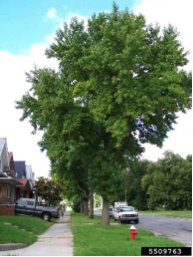 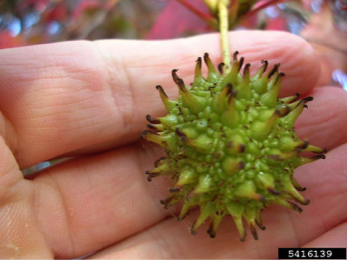
|
||||||||||||||||||||||||||||||
Working PropertiesMachining    Nailing    Screwing    Gluing  Finishing    
|
||||||||||||||||||||||||||||||
Strength and Mechanical Properties (inch-pound)a
b) Specific gravity is based on weight when ovendry and volume when green or at 12% moisture content c) Modulus of elasticity measured from a simply supported, center-loaded beam, on a span depth ratio of 14/1. To correct for shear reflection, the modulus can be increased by 10%. |
||||||||||||||||||||||||||||||
 HACKBERRY (SUGARBERRY)
HACKBERRY (SUGARBERRY)
CELTIS OCCIDENTALIS
Where It GrowsEastern U.S. Average tree height is 130 feet Main usesFurniture and kitchen cabinets, millwork, doors and moldings. Relative AbundanceTogether, aspen, basswood, cottonwood, elm, gum, hackberry, sassafras, sycamore and willow represent 12.5 percent of commercially available U.S. hardwoods. Did You Know?Historically, most Southern church pews were made of hackberry. It often is used for farm implements as well as crates and boxes. General DescriptionHackberry is closely related to sugarberry (Celtis laevigata) and is a member of the elm family. There is little difference between sapwood and heartwood which is yellowish grey to light brown with yellow streaks. The wood is very susceptible to blue staining before and after kiln drying and has irregular grain, occasionally straight and sometimes interlocked, with a fine uniform texture. Working PropertiesThe wood planes and turns well and is intermediate in its ability to hold nails and screws, and stains satisfactorily. Hackberry dries readily with minimal degrade. It has a fairly high shrinkage and is most suitable in cut stock (small/short pieces). Physical PropertiesHackberry is moderately hard, heavy and has medium bending strength, high shock resistance but is low in stiffness. It has a good steam-bending classification. AvailabilityReasonable. 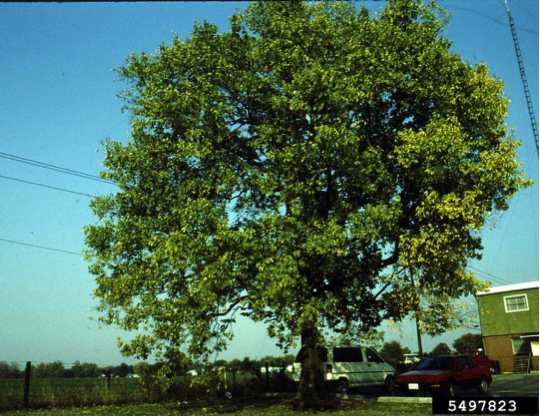 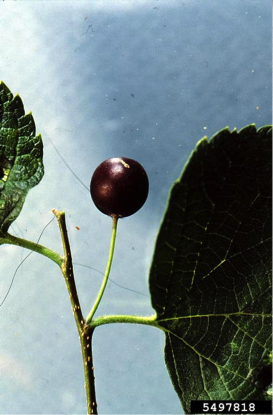
|
||||||||||||||||||||||||||||||
Working PropertiesMachining    Nailing    Screwing    Gluing    Finishing   
|
||||||||||||||||||||||||||||||
Strength and Mechanical Properties (inch-pound)a
b) Specific gravity is based on weight when ovendry and volume when green or at 12% moisture content c) Modulus of elasticity measured from a simply supported, center-loaded beam, on a span depth ratio of 14/1. To correct for shear reflection, the modulus can be increased by 10%. |
||||||||||||||||||||||||||||||
 HARD MAPLE (SUGAR MAPLE, BLACK MAPLE)
HARD MAPLE (SUGAR MAPLE, BLACK MAPLE)
ACER SACCHARUM, ACER NIGRUM
|
The hard maple is the state tree of Wisconsin, Vermont, New York and West Virginia. In the North, during the cold nights and warm days of late winter, the sugar maple is tapped for its sucrose-containing sap, the source of maple syrup. It may take up to 30 gallons of sap to make one gallon of syrup. Early American settlers used maple ashes to make soap and Native Americans crafted their spears from hard maple. Until the turn of the century, the heels of women's shoes were made from maple. Maple has been a favorite of American furniture makers since early Colonial days. Hard maple is the standard wood for cutting boards because it imparts no taste to food and holds up well. Where It GrowsEastern U.S., principally Mid-Atlantic and Lake states. A cold weather tree favoring a more northerly climate, its average height is 130 feet. Main usesFlooring, furniture, paneling, ballroom and gymnasium floors, kitchen cabinets, worktops, table tops, butchers blocks, toys, kitchenware and millwork: stairs, handrails, moldings, and doors. Relative Abundance4 percent of U.S. hardwoods commercially available. Did You Know?A single sugar maple tree produces up to 12 gallons of sap a year. General DescriptionThe sapwood is creamy white with a slight reddish brown tinge and the heartwood varies from light to dark reddish brown. The amount of darker brown heartwood can vary significantly according to growing region. Both sapwood and heartwood can contain pith fleck. The wood has a close fine, uniform texture and is generally straight-grained, but it can also occur as "curly," "fiddleback," and "birds-eye" figure. Working PropertiesHard maple dries slowly with high shrinkage, so it can be susceptible to movement in performance. Pre-boring is recommended when nailing and screwing. With care it machines well, turns well, glues satisfactorily, and can be stained to an outstanding finish. Polishes well and is suitable for enamel finishes and brown tones. Physical PropertiesThe wood is hard and heavy with good strength properties, in particular its high resistance to abrasion and wear. It also has good steam-bending properties. AvailabilityWidely available. The higher quality grades of lumber are available selected for white color (sapwood) although this can limit availability. Figured maple (birds-eye, curly, fiddleback) is generally only available in commercial volumes as veneer. 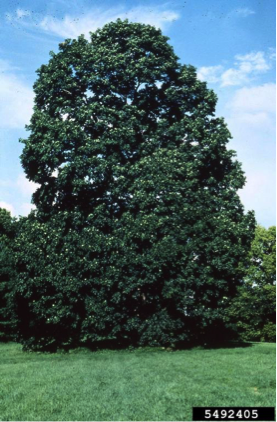 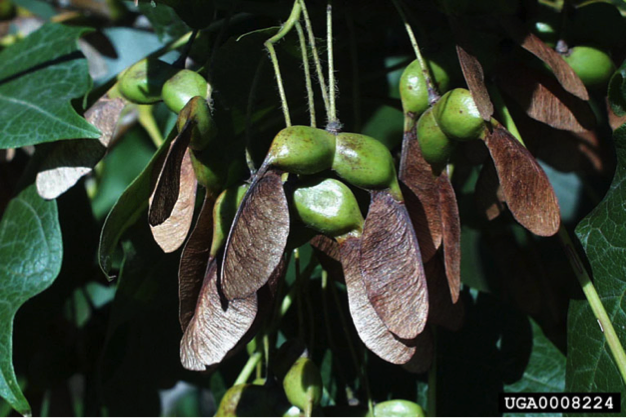
|
||||||||||||||||||||||||||||||
Working PropertiesMachining    Nailing  Screwing  Gluing    Finishing   
|
||||||||||||||||||||||||||||||
Strength and Mechanical Properties (inch-pound)a
b) Specific gravity is based on weight when ovendry and volume when green or at 12% moisture content c) Modulus of elasticity measured from a simply supported, center-loaded beam, on a span depth ratio of 14/1. To correct for shear reflection, the modulus can be increased by 10%. |
||||||||||||||||||||||||||||||
 HICKORY & PECAN
HICKORY & PECAN
CARYA SPP.
|
Its name is an English contraction of the Native American "powcohicora." In Eastern North America, it survived the catastrophic changes of the Glacial Epoch, some 50 million years ago. Thus, it is the first strictly American hardwood species. Westward trekking pioneers made hickory a prerequisite for their wagon wheels. Later, the Wright Brothers whittled hickory for their "flying contraption." Hickory sawdust and chips are used to flavor meat by smoking. Commercially, the pecan is the most important native North American nut tree and it is the state tree of Texas. Pecan was a Native American name given to any nut hard enough to require cracking with a stone. Native Americans, particularly in the Northeast, used hickory for their bows. Where It GrowsEastern U.S., principal commercial areas: Central and Southern states. Tree height ranges from 60 to 120 feet. Hickories grow slowly and it is not unusual for a tree to take 200 years to mature. Main usesTool handles, furniture, cabinetry, flooring, paneling, wooden ladders, dowels and sporting goods. Relative Abundance2.2 percent of total U.S. hardwoods commercially available. Did You Know?Andrew Jackson, seventh president of the U.S., was nicknamed “Old Hickory” because of his toughness during disputes. General DescriptionThe hickories are an important group within the Eastern hardwood forests. Botanically they are split into two groups; the true hickories, and the pecan hickories (fruit bearing). The wood is virtually the same for both and is usually sold together. Hickory is the hardest, heaviest and strongest American wood. The sapwood of hickory is white, tinged with inconspicuous fine brown lines while the heartwood is pale to reddish brown. Both are coarse-textured and the grain is fine, usually straight but can be wavy or irregular. Working PropertiesThe heaviest of American hardwoods, the hickories can be difficult to machine and glue, and are very hard to work with hand tools, so care is needed. They hold nails and screws well, but there is a tendency to split so pre-boring is advised. The wood can be sanded to a good finish. The grain pattern welcomes a full range of medium-to-dark finishes and bleaching treatments. It can be difficult to dry and has high shrinkage. Physical PropertiesThe density and strength of the hickories will vary according to the rate of growth, with the true hickories generally showing higher values than the pecan hickories. The wood is well-known for its very good strength and shock resistance and it also has excellent steam-bending properties. Extremely tough and resilient, even texture, quite hard and only moderately heavy. AvailabilityReadily available, more limited if sold selected for color as either red or white hickory.  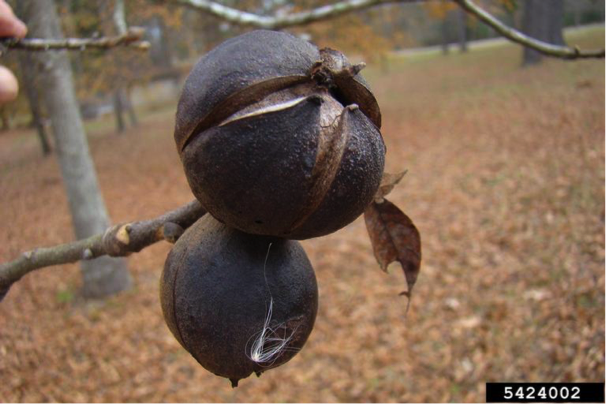  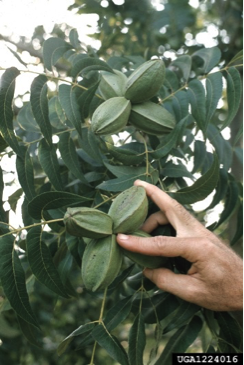
|
||||||||||||||||||||||||||||||
Working PropertiesMachining  Nailing  Screwing  Gluing   Finishing  
|
||||||||||||||||||||||||||||||
Strength and Mechanical Properties (inch-pound)a
b) Specific gravity is based on weight when ovendry and volume when green or at 12% moisture content c) Modulus of elasticity measured from a simply supported, center-loaded beam, on a span depth ratio of 14/1. To correct for shear reflection, the modulus can be increased by 10%. |
||||||||||||||||||||||||||||||
 PACIFIC COAST MAPLE (BIG LEAF MAPLE)
PACIFIC COAST MAPLE (BIG LEAF MAPLE)
ACER MACROPHYLLUM
Where It GrowsPrincipally in the Pacific Northwest, where it is an abundant commercial hardwood. Average height is 60 ft. It grows scattered or in small groves. Main usesFurniture, kitchen cabinets, doors, shutters, moldings, panel stock, turnings, carvings and kitchen utensils. Relative AbundanceThe Pacific Coast Maple is very fast growing; it is the second most abundant species of hardwood trees. Did You Know?Pacific Coast Maple is easy on the pocket book; it’s about half the cost of hard maple. General DescriptionIts color is pale pinkish-brown to almost white. Generally there is no marked difference between heartwood and sapwood. Its fine grain is similar to birch and cherry with respect to growth ring contrast. It dries easily with little degrade and has good dimensional stability after drying. Working PropertiesPacific Coast Maple machines well and is excellent for turning. It nails, screws and glues well and can be sanded, stained or painted to a good finish. Physical PropertiesPacific Coast Maple has medium density, but is slightly harder than eastern soft maple. It has medium bending strength, shock resistance and stiffness. AvailabilityAvailable as lumber and dimension stock. 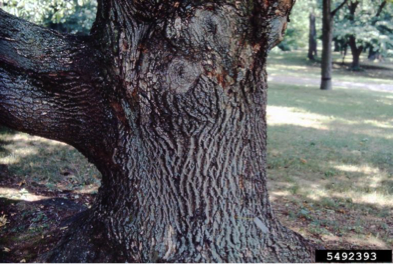 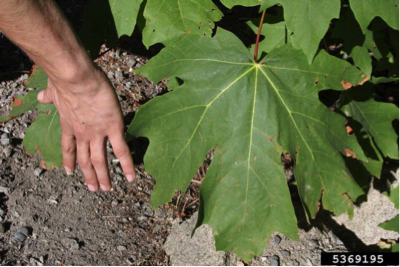
|
||||||||||||||||||||||||||||||
Working PropertiesMachining    Nailing   Screwing   Gluing   Finishing    
|
||||||||||||||||||||||||||||||
Strength and Mechanical Properties (inch-pound)a
b) Specific gravity is based on weight when ovendry and volume when green or at 12% moisture content c) Modulus of elasticity measured from a simply supported, center-loaded beam, on a span depth ratio of 14/1. To correct for shear reflection, the modulus can be increased by 10%. |
||||||||||||||||||||||||||||||
 POPLAR (YELLOW POPLAR, TULIPWOOD)
POPLAR (YELLOW POPLAR, TULIPWOOD)
LIRIODENDRON TULIPIFERA
|
Yellow poplar trees grow taller than any other U.S. hardwood species and they are members of the magnolia family. The bark, leaves, flowers, fruit and roots contain pharmaceuticals. Poplar is the state tree of Indiana, Kentucky and Tennessee. Where It GrowsWidespread throughout Eastern U.S. Tree heights can reach 150 feet. Main usesLight construction, furniture, kitchen cabinets, doors, musical instruments, exterior trim and siding, paneling, moldings and millwork, edge-glued panels, turnings and carvings. Relative Abundance11.2 percent of total U.S. hardwoods commercially available. Did You Know?The poplar tree is rarely attacked by parasites. General DescriptionThe sapwood is creamy white and may be streaked, with the heartwood varying from pale yellowish brown to olive green. The green color in the heartwood will tend to darken on exposure to light and turn brown. The wood has a medium to fine texture and is straight-grained; has a comparatively uniform texture. Working PropertiesA versatile wood that is easy to machine, plane, turn, glue and bore. It dries easily with minimal movement in performance and has little tendency to split when nailed. It takes and holds paint, enamel and stain exceptionally well. Physical PropertiesA medium density wood with low bending, shock resistance, stiffness and compression values, with a medium steam-bending classification. Excellent strength and stability. AvailabilityVery widely available. 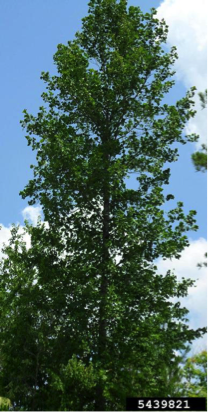 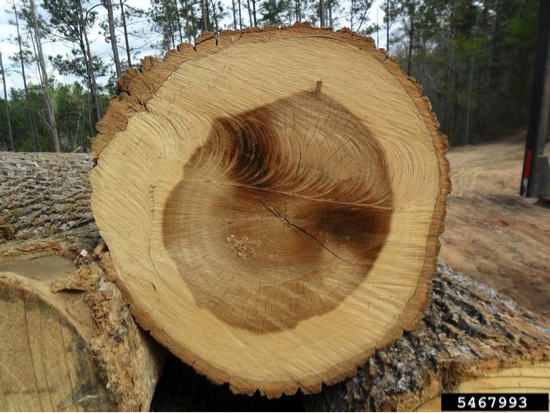
|
||||||||||||||||||||||||||||||
Working PropertiesMachining     Nailing  Screwing    Gluing    Finishing    
|
||||||||||||||||||||||||||||||
Strength and Mechanical Properties (inch-pound)a
b) Specific gravity is based on weight when ovendry and volume when green or at 12% moisture content c) Modulus of elasticity measured from a simply supported, center-loaded beam, on a span depth ratio of 14/1. To correct for shear reflection, the modulus can be increased by 10%. |
||||||||||||||||||||||||||||||
 SASSAFRAS (GOLDEN ELM)
SASSAFRAS (GOLDEN ELM)
SASSAFRAS ALBIDUM
Where It GrowsSporadically distributed throughout the Eastern U.S. Height varies with region: southern trees generally grow tallest with average heights of 80 feet. Main usesFurniture, millwork and moldings, windows, doors and door frames and kitchen cabinets. Other UsesSassafras tea can be made from boiling the tree’s flowers and the root bark. Sassafras oil from the tree’s root can also be used to perfume soap and as medicine. Chewing on sassafras twigs stimulates saliva production: a useful fact for desperately thirsty hikers. Relative AbundanceTogether, aspen, basswood, cottonwood, elm, gum, hackberry, sassafras, sycamore and willow represent 12.5 percent of commercially available U.S. hardwoods. Did You Know?Sir Walter Raleigh took sassafras back to England from Virginia. In what were called the Great Sassafras Hunts from 1602-1603, ships were sent from England to collect the roots. Sassafras roots then were converted into a tonic that smelled like root beer and supposedly kept its drinkers youthful and healthy. Sassafras was also used as dye to give fabric an orange tint. General DescriptionSassafras heartwood is pale brown to orange brown, resembling ash or chestnut. The narrow sapwood is yellowish white. The wood has a coarse texture and is generally straight-grained. Well-known as an aromatic species. Working PropertiesSassafras is easily worked and takes a finish well. It glues well and holds screws better than it nails, where pre-boring may be necessary to avoid splitting. It requires care in drying as it has a tendency to check with small movement in performance. Physical PropertiesMedium strength in all categories except stiffness which is low. Suitable for steam bending. AvailabilityLumber extremely limited.  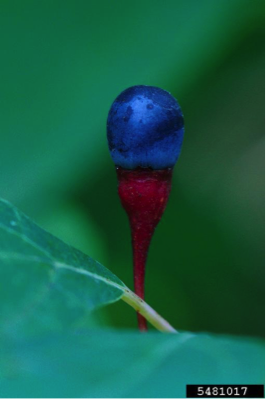
|
Working PropertiesMachining     Nailing  Screwing   Gluing     Finishing  
|
 SOFT MAPLE (RED MAPLE, SILVER MAPLE, BOX ELDER)
SOFT MAPLE (RED MAPLE, SILVER MAPLE, BOX ELDER)
ACER RUBRUM, ACER SACCHARINUM
Where It GrowsThroughout Eastern U.S., and to a lesser extent on the West Coast (bigleaf maple). Average tree height is 60 to 80 feet. Main usesFurniture, paneling and millwork, kitchen cabinets, moldings, doors, musical instruments, and turnings. Soft maple is often used as a substitute for hard maple or stained to resemble other species such as cherry. Its physical and working properties also make it a possible substitute for beech. Relative Abundance4 percent of U.S. hardwoods commercially available. Did You Know?Charcoal is often made from soft maple. General DescriptionIn most respects soft maple is very similar to hard maple. Generally the sapwood is greyish white, sometimes with darker colored pith flecks. The heartwood varies from light to dark reddish brown. The wood is usually straight-grained. The lumber is generally sold unselected for color. Working PropertiesSoft maple machines well and can be stained to an excellent finish. It glues, screws, and nails satisfactorily. Polishes well and is suitable for enamel finishes and brown tones. It dries slowly with minimal degrade and there is little movement in performance. Physical PropertiesSoft maple is about 25 percent less hard than hard maple, has medium bending and crushing strength, and is low in stiffness and shock resistance. It has good steam-bending properties. AvailabilityReadily available. 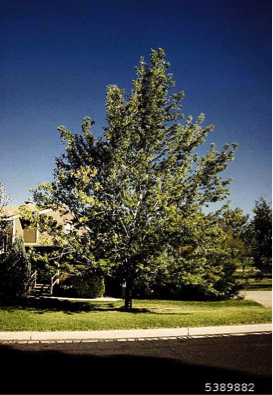 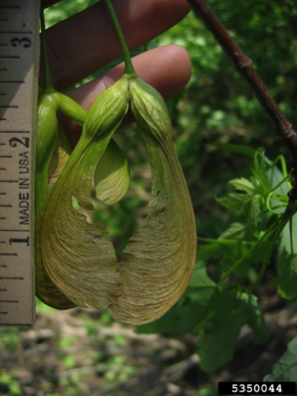
|
||||||||||||||||||||||||||||||
Working PropertiesMachining    Nailing   Screwing   Gluing   Finishing    
|
||||||||||||||||||||||||||||||
Strength and Mechanical Properties (inch-pound)a
b) Specific gravity is based on weight when ovendry and volume when green or at 12% moisture content c) Modulus of elasticity measured from a simply supported, center-loaded beam, on a span depth ratio of 14/1. To correct for shear reflection, the modulus can be increased by 10%. |
||||||||||||||||||||||||||||||
 SYCAMORE (BUTTONWOOD, PLANE TREE)
SYCAMORE (BUTTONWOOD, PLANE TREE)
PLATANUS OCCIDENTALIS
Where It GrowsThroughout Eastern U.S. Average tree height is 60 to 125 feet with peeling outer bark and a smooth, mottled cream, tan and green inner bark resembling camouflage. Main usesFurniture, furniture parts (drawer sides), millwork, paneling and moldings, flooring, kitchenware, butchers blocks, toys and fruit crates. Relative AbundanceTogether, aspen, basswood, cottonwood, elm, gum, hackberry, sassafras, sycamore and willow represent 12.5 percent of commercially available U.S. hardwoods. Did You Know?The sycamore has the largest leaf of any tree native to North America. General DescriptionThe sapwood of sycamore is white to light yellow, while the heartwood is light to dark brown. The wood has a fine close texture with interlocked grain. Contrasts well with other species. Working PropertiesThe wood machines well, but high speed cutters are needed to prevent chipping. It is resistant to splitting due to the interlocked grain. The wood glues well and stains, with care, to an excellent finish. It dries fairly rapidly, with a tendency to warp. It has moderate shrinkage and little movement in performance. Physical PropertiesThe wood is classified as moderate in weight, hardness, stiffness and shock resistance. It turns well on the lathe and has good bending qualities. AvailabilityReasonable availability. 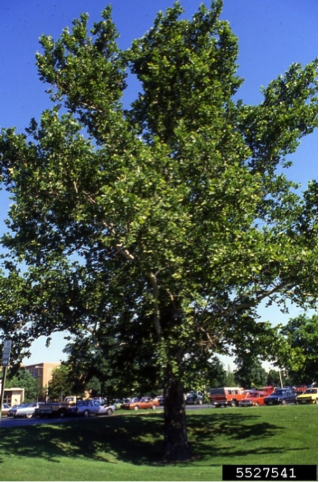 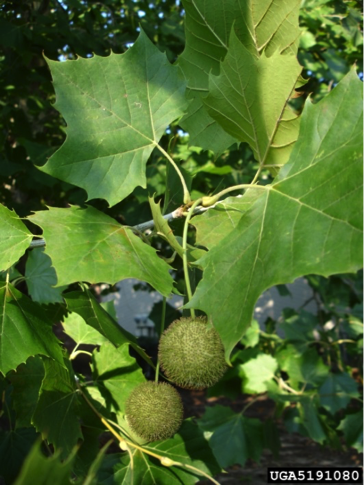 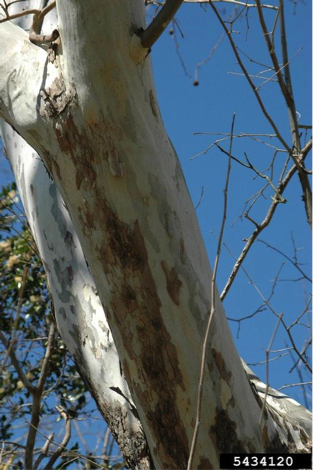
|
||||||||||||||||||||||||||||||
Working PropertiesMachining    Nailing     Screwing     Gluing    Finishing   
|
||||||||||||||||||||||||||||||
Strength and Mechanical Properties (inch-pound)a
b) Specific gravity is based on weight when ovendry and volume when green or at 12% moisture content c) Modulus of elasticity measured from a simply supported, center-loaded beam, on a span depth ratio of 14/1. To correct for shear reflection, the modulus can be increased by 10%. |
||||||||||||||||||||||||||||||
 RED ELM
RED ELM
ULMUS RUBRA
Where It GrowsThe Eastern to Midwest U.S. Average tree height is 40 to 60 feet. Main usesFurniture, cabinet making, flooring, millwork, paneling and caskets. Relative AbundanceTogether, aspen, basswood, cottonwood, elm, gum, hackberry, sassafras, sycamore and willow represent 12.5 percent of commercially available U.S. hardwoods. Did You Know?The red elm has a glue-like substance in its inner bark that formerly was steeped in water as a remedy for throat ailments; powdered for use in poultices, and chewed as a thirst-quencher. General DescriptionRed elm has a greyish white to light brown narrow sapwood, with heartwood that is reddish brown to dark brown in color. The grain can be straight, but is often interlocked. The wood has a coarse texture. Working PropertiesThe wood of red elm is fairly easy to work, it nails, screws and glues well, and can be sanded and stained to a good finish. It dries well with minimum degrade and little movement in performance. Physical PropertiesElm is moderately heavy, hard and stiff with excellent bending and shock resistance. It is difficult to split because of its interlocked grain. AvailabilityAvailable. 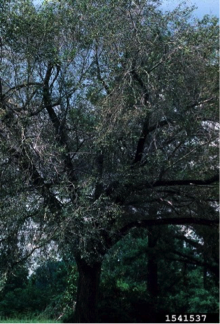
|
||||||||||||||||||||||||||||||
Working PropertiesMachining   Nailing     Screwing     Gluing     Finishing    
|
||||||||||||||||||||||||||||||
Strength and Mechanical Properties (inch-pound)a
b) Specific gravity is based on weight when ovendry and volume when green or at 12% moisture content c) Modulus of elasticity measured from a simply supported, center-loaded beam, on a span depth ratio of 14/1. To correct for shear reflection, the modulus can be increased by 10%. |
||||||||||||||||||||||||||||||
 OAK (RED)
OAK (RED)
QUERCUS SPP.
|
The Latin name for oak, Quercus, means "a fine tree." The oaks have been key in America's industrial transformation: railroad ties, wheels, plows, looms, barrels and, of course, furniture and floors. The oak is the state tree of New Jersey. Where It GrowsWidespread throughout Eastern U.S. The oaks are by far the most abundant species group growing in the Eastern hardwood forests. Red oaks grow more abundantly than the white oaks. The red oak group comprises many species, of which about eight are commercial. Average tree height is 60 to 80 feet. Main usesFurniture, flooring, architectural millwork and moldings, doors, kitchen cabinets, paneling and caskets. Relative Abundance36.6 percent of total U.S. hardwoods commercially available. Did You Know?The bark from oak trees is rich in tannin. General DescriptionThe sapwood of red oak is white to light brown and the heartwood is a pinkish reddish brown. The wood is similar in general appearance to white oak, but with a slightly less pronounced figure due to the smaller rays. The wood is mostly straight-grained, with a coarse texture. Working PropertiesRed oak machines well, nailing and screwing are good although pre-boring is recommended, and it can be stained to a good finish. It can be stained with a wide range of finish tones. It dries slowly. Physical PropertiesThe wood is hard and heavy, with medium bending strength and stiffness and high crushing strength. It is very good for steam bending. Great wear-resistance. AvailabilityAbundant. Most widely used species. 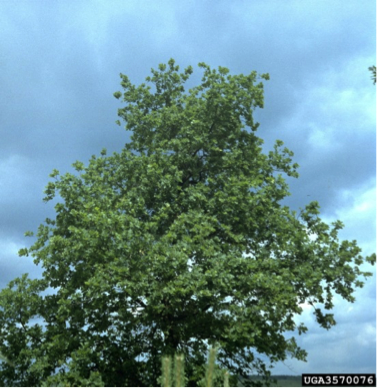 
|
||||||||||||||||||||||||||||||
Working PropertiesMachining     Nailing    Screwing    Gluing    Finishing    
|
||||||||||||||||||||||||||||||
Strength and Mechanical Properties (inch-pound)a
b) Specific gravity is based on weight when ovendry and volume when green or at 12% moisture content c) Modulus of elasticity measured from a simply supported, center-loaded beam, on a span depth ratio of 14/1. To correct for shear reflection, the modulus can be increased by 10%. |
||||||||||||||||||||||||||||||
 OAK (WHITE)
OAK (WHITE)
QUERCUS SPP.
| DESCRIPTION IN WORD DOC SAME AS RED OAK. NEED UPDATE. | ||||||||||||||||||||||||||||||
Working PropertiesMachining     Nailing    Screwing    Gluing    Finishing    
|
||||||||||||||||||||||||||||||
Strength and Mechanical Properties (inch-pound)a
b) Specific gravity is based on weight when ovendry and volume when green or at 12% moisture content c) Modulus of elasticity measured from a simply supported, center-loaded beam, on a span depth ratio of 14/1. To correct for shear reflection, the modulus can be increased by 10%. |
||||||||||||||||||||||||||||||
 WILLOW (BLACK WILLOW, SWAMP WILLOW)
WILLOW (BLACK WILLOW, SWAMP WILLOW)
SALIX SPP.
Where It GrowsPrincipal commercial areas are the Middle and Southern states, along the Mississippi River. Average tree height is usually no taller than 30 to 40 feet. Main usesFurniture, moldings and millwork, paneling, doors, sports equipment, kitchen utensils and toys. Good walnut substitute. Relative AbundanceTogether, aspen, basswood, cottonwood, elm, gum, hackberry, sassafras, sycamore and willow represent 12.5 percent of commercially available U.S. hardwoods. Did You Know?The chemical predecessor of aspirin originally was isolated from willow bark. General DescriptionThe sapwood of willow varies in width according to growing conditions and is light creamy brown in color. In contrast, the heartwood is pale reddish brown to greyish brown. The wood has a fine even texture and although generally straight-grained it can sometimes be interlocked, or display figure. Working PropertiesWillow works fairly easily with hand and machine tools but care is needed to avoid a fuzzy surface when interlocked grain is present. The wood nails and screws well, glues excellently, and can be sanded to a very good finish. It dries fairly rapidly with minimal degrade although may be susceptible to moisture pockets. Dimensional stability is good when dry. Physical PropertiesThe wood is weak in bending, compression, shock-resistance and stiffness, with a poor steam-bending classification. AvailabilityReasonable availability on a regional basis. 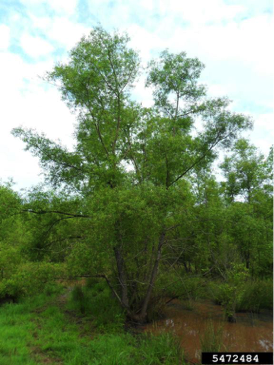
|
Working PropertiesMachining    Nailing    Screwing    Gluing     Finishing    
|
 YELLOW BIRCH
YELLOW BIRCH
BETULA ALLEGHANIENSIS
|
From sap to bark, birch trees are used to make everything from beer to toothpicks. Native Americans stretched birch bark on their canoe frames and used the wood for their arrows. The birch is New Hampshire's state tree. It is also popular as an ornamental tree and has gained the nickname "Mother Tree" because birches were planted at the White House to honor the mothers of U.S. presidents. The oil extracted from the bark contains a chemical used to treat rheumatism and inflammations. Where It GrowsEastern U.S., principally Northern and Lake states. The average tree is 60 to 70 feet in height. Birch prefers valleys and stream banks although it adapts itself to higher grounds. Main usesFurniture, millwork and paneling, doors, flooring, kitchen cabinets, turnings and toys. Relative Abundance0.7 percent of total U.S. hardwoods commercially available. Did You Know?Native Americans often rolled and burned birch bark to keep mosquitoes away. General DescriptionYellow birch has a white sapwood and light reddish brown heartwood. The wood is generally straight-grained with a fine uniform texture. Generally characterized by a plain and often curly or wavy pattern. Working PropertiesThe wood works fairly easily, glues well with care, takes stain extremely well, and nails and screws satisfactorily where pre-boring is advised. It dries rather slowly with little degrade, but it has moderately high shrinkage, so is susceptible to movement in performance. Physical PropertiesThe wood of yellow birch is heavy, hard and strong. It has very good bending properties, with good crushing strength and shock resistance. AvailabilityReasonable availability, but more limited if selected for color. 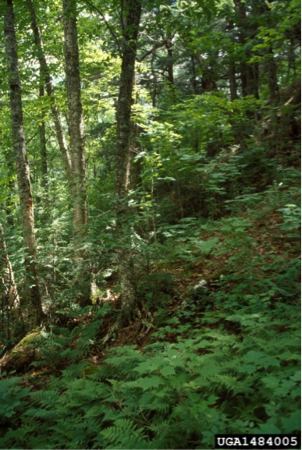 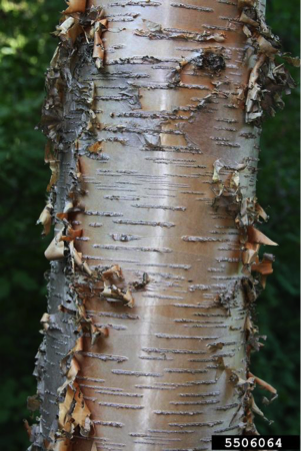
|
||||||||||||||||||||||||||||||
Working PropertiesMachining    Nailing   Screwing  Gluing   Finishing    
|
||||||||||||||||||||||||||||||
Strength and Mechanical Properties (inch-pound)a
b) Specific gravity is based on weight when ovendry and volume when green or at 12% moisture content c) Modulus of elasticity measured from a simply supported, center-loaded beam, on a span depth ratio of 14/1. To correct for shear reflection, the modulus can be increased by 10%. |
||||||||||||||||||||||||||||||